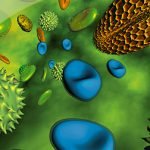Not all allergies are alike. At the food allergy awareness day on June 21st, we will be dealing with food allergies in children and will show what is actually important for a diagnosis.
A food allergy can be the reason why a child is suffering from a rash, itching, sneezing attacks, coughing, shortness of breath, nausea or stomach aches after eating. Food allergies in children are widespread: It is estimated that 4-6% of children are affected; in adults it’s only about 2-3 %. The reason for this is that in children the digestive tract is not fully developed and therefore, cannot break down certain proteins contained in food. Allergies can develop at an early age, but they are most common in children aged two and three. In three quarters of the cases, the allergy disappears on its own by school age. However, until then it is extremely important to avoid food that causes the allergic reaction.
The prerequisite for this is of course to identify the food that the child is allergic to. The foods that generally trigger an allergy in children are different to those in adults:
- Common allergy triggers in infants: cow’s milk, egg, soy
- Common allergy triggers in children: cow’s milk, egg, soy, nuts, fish, cereal
- Common allergy triggers in adults: vegetables, fruit, spices, nuts, fish, cow’s milk
Children generally need to undergo several tests until the trigger for the complaints is found, because allergy diagnosis comprises several steps:
- Medical history: In a discussion, the doctor will first inquire about the medical history, the possible triggers and the severity of the symptoms. Finding out the medical history of young children can be difficult because they are not yet able to communicate their complaints properly.
- Prick test: This test, in which different allergens are applied to the skin and a lancet is used to prick the upper dermal layer, is a fixed component of allergy diagnosis for children over the age of 6 and adults. This test is rarely performed on young children because the areas of skin available are hardly big enough and the procedure can be stressful for the small body. In some cases, the test is not possible due to neurodermatitis.
- Blood test: The final step includes carrying out a blood test for IgE antibodies. The presence of specific IgE antibodies in the blood shows whether the immune system deals with specific allergens. However, in children it is often difficult to obtain large quantities of blood for a blood test. A solution for this is the RIDA qLine® allergy test, which requires only very little blood. A screening of up to 20 allergens can be carried out with a single panel, whereby there is a specific panel for allergies that occur more frequently in children.
Finally, it is important to note that in addition to normal food allergies (type I-allergies) there are also delayed food allergies (type III-allergies). In this case the symptoms sometimes appear after several hours or even days, which makes it difficult to identify the relationship to a specific food. Furthermore, a differentiation must be made between allergies and food intolerances. The immune system has nothing to do with an intolerance – therefore, for diagnosis it requires tests that differ from those for “genuine” allergies.









